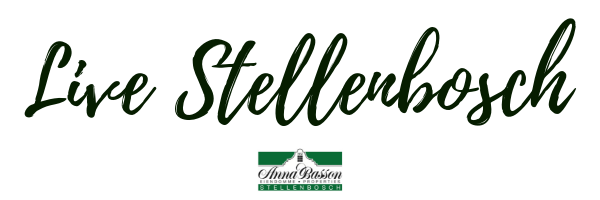Hans Endler and FW Jannasch are two of the big names in Stellenbosch’s cultural history.
The Endler hall is where most of the big classical music conserts in Stellenbosch are held. Endler street is close to Stellenbosch high and primary school. Fismer and Jannasch are the names of two smaller venues in the conserve, where lunch hour concerts are sometimes held and where the university choir has their rehearsals.
The era in which Endler and Jannasch lived, the second half of the 1800’s, was also the era of Hofmeyr, Murray and Neethling (the founders of the theological seminary), and the time when Rhenish (1860), Paul Roos gimnasium (1866), and Bloemhof (1874) were established.

Jannasch - laying the foundation
Jannasch (1853 – 1930) was Stellenbosch’s first permanent ‘professional musician’, and helped create a culture of classical music in Stellenbosch. He was merely 30 when he came here.
As an instrumentalist Jannasch was a pianist and organist, but in Stellenbosch he was responsible for all kinds of tasks – he was the local choir and orchestra conductor, played organ in the Mother church on Sundays, was the bandmaster of the Victoria College volunteers, was responsible for the music of the CJV (Christian Youth Ministries) and was a teacher at the Rhenish school and Bloemhof.
Jannasch was also fluent in three languages – German (he went to school in Germany and completed his musical studies in Stockholm) but he spoke Afrikaans/Dutch to the Stellenbosch people and English to his wife, an American lady called Carrie Ingraham.
Stellenbosch's first music schools
When he was 40 years old, Jannasch started his own music school, the Stellenbosch Music School, also known as the Greylock Music Academy. His house in Van Riebeeckstraat was called Greylock.
During the same period, there were two other music schools in town - one in Dorp Street named Villieria (led by the sisters Nancy de Villiers and Elizabeth von Willich), and another in Plein Street, of which Hans Endler was the head.
Endler en Jannasch's paths cross
Jannasch and Endler’s stories coincide in 1904 when it's decided to merge the three existing music schools as one formal institution.
The five musicians (Jannasch, Endler, the sisters Nancy and Elizabeth and one of Jannasch’s former assistants, Armin Schniter) were the founding members. Since the school was not yet part of the university, the five individuals took it upon themselves to construct the new conserve building.
Today this building is known as the ‘old conserve’, a beautiful Renaissance-style building with its arch windows in Van Riebeeck Street.
The conserve becomes part of US
In 1934 the conservatoire was taken over by the university. On their website they explain: "In 1978 the department moved to its present premises, one of the best designed and well equipped music buildings to be found anywhere. It accommodates approximately 170 undergraduate and more than 70 postgraduate students, 100 certificate students as well as 21 full-time staff and 37 part-time teaching staff."
The Fismer hall was named after Maria Fismer, who was the first professor at the original conservatorium. She moved from Robertson to Stellenbosch to do her diploma in music, and eventually became the first professor of the South African conservatorium of Music. Years later, when she retired as head of the school, she received a honorory doctorate from the University
Distinct personalities
Jannasch is remembered as an introverted, demure person from Morawische background (a small division within the Calvinist church). He had a love for the Genevan Psalms. Jannasch helped to inaugurate many of the church organs in SA, and was the person who introduced choir music into the Mother church liturgy.
Hans Endler (1871- 1947) was completely different in character – he was an extrovert and everybody’s friend, and had a special fondness for band music. Endler had a bandstand erected in The Avenue and held many promenade concerts there. Endler was an Austrian, but spent 6 years playing in different orchestras in London before coming to Stellenbosch by request of PK De Villiers.
While Jannasch was focused on piano and organ, Endler was a violinist and cellist.
